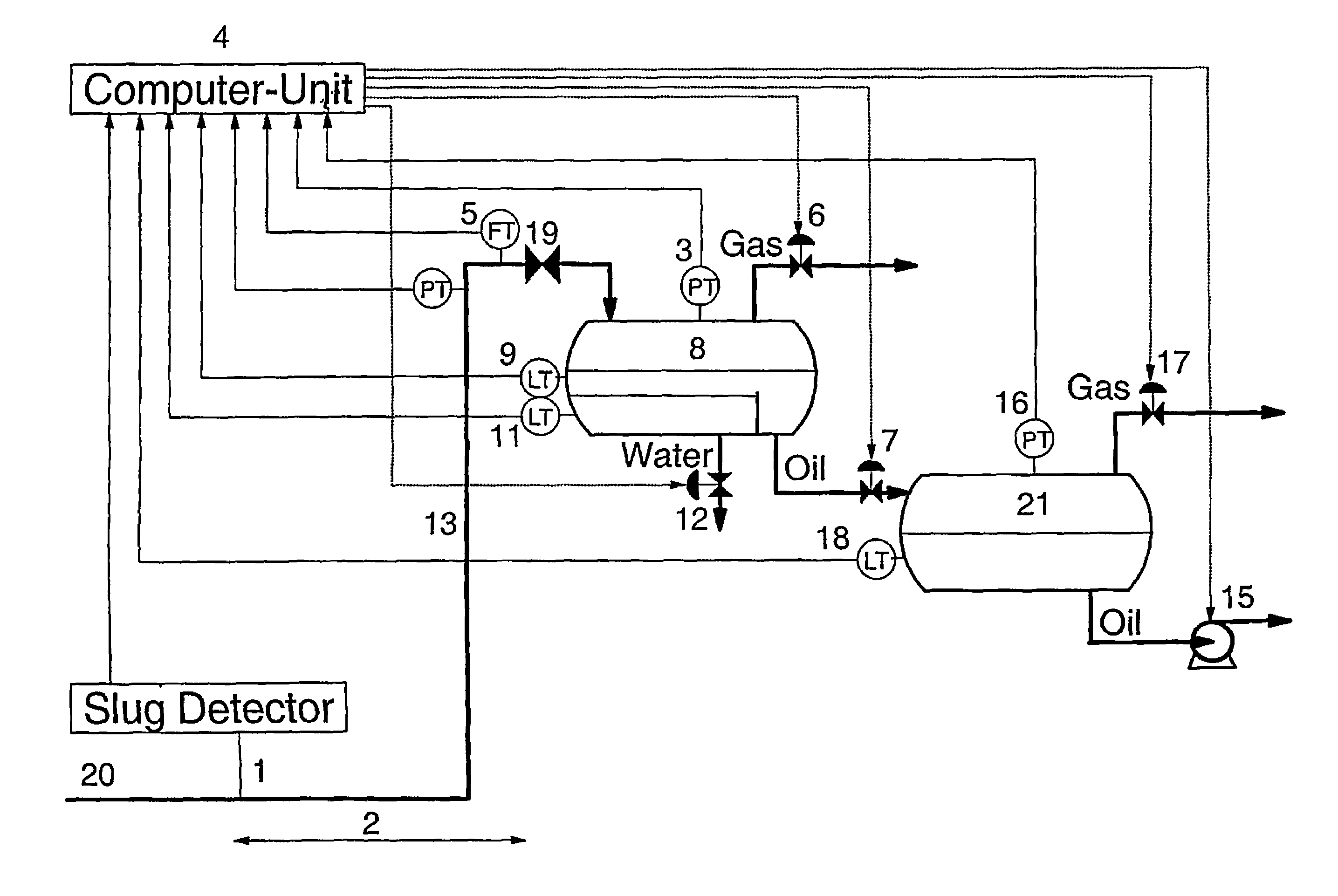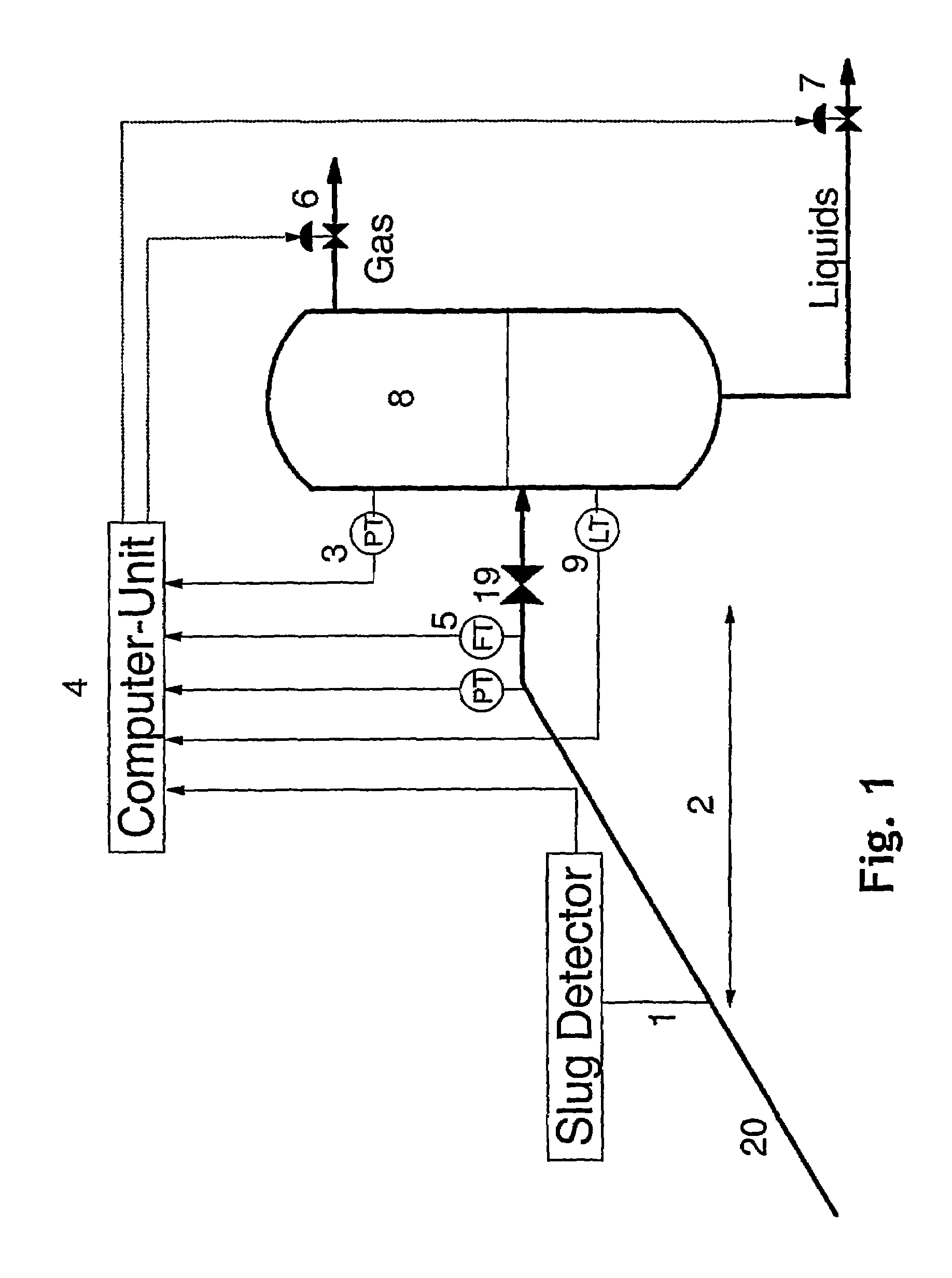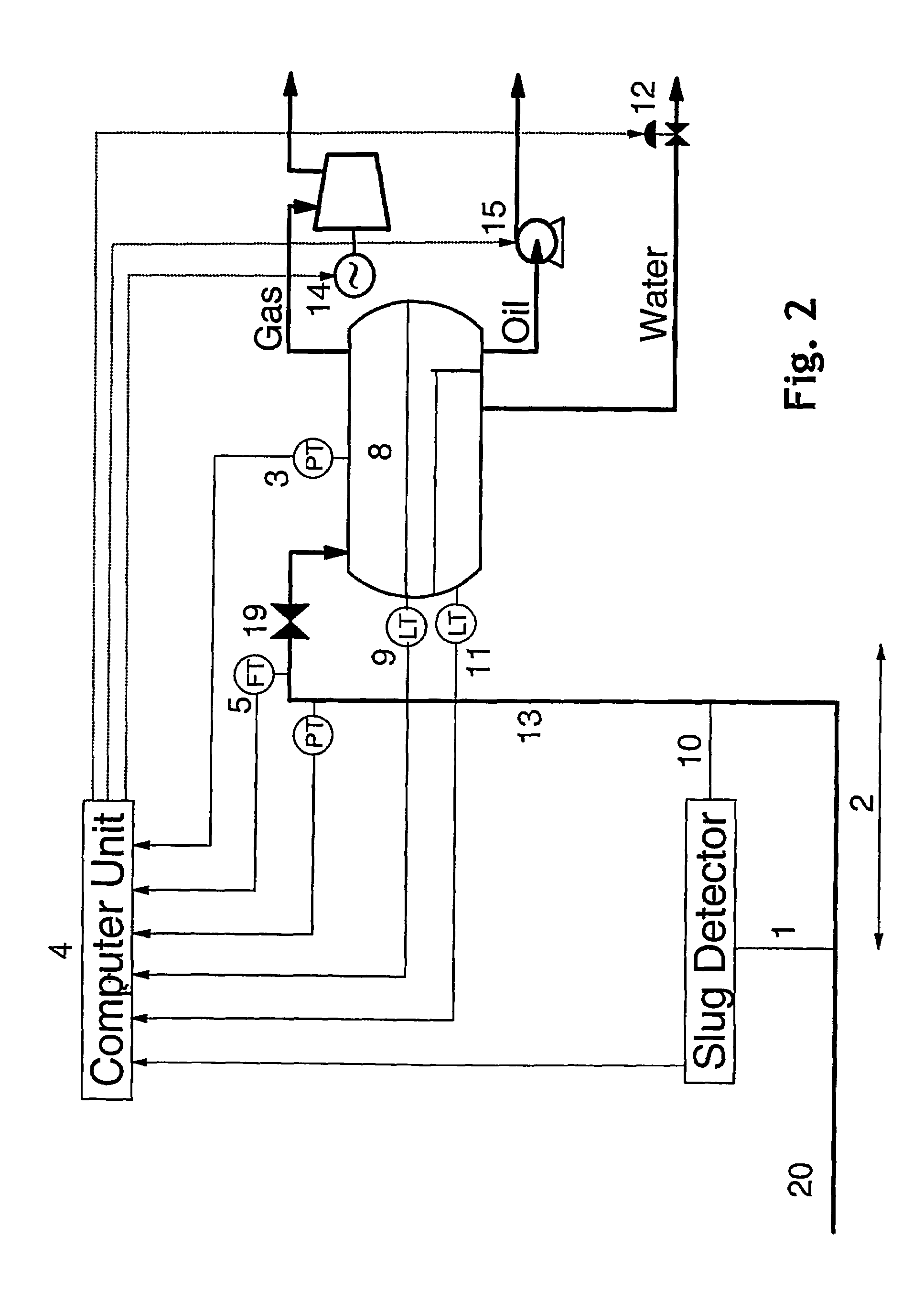System and a method for prediction and treatment of slugs being formed in a flow line or wellbore tubing
a flow line or wellbore tubing and slug technology, applied in the directions of water supply installation, transportation and packaging, borehole/well accessories, etc., to achieve the effect of eliminating the disadvantages of the former system
- Summary
- Abstract
- Description
- Claims
- Application Information
AI Technical Summary
Benefits of technology
Problems solved by technology
Method used
Image
Examples
Embodiment Construction
[0041]FIG. 1 shows a process diagram of the present invention in its simplest form implemented in an offshore production system producing towards an onshore process including a vertical two-phase slug catcher 8 at the inlet of the process. It is further seen that the slug catcher pressure 3 is controlled by adjustment of a gas outlet valve 6. Correspondingly, its liquid level 9 is controlled by adjustment of a liquid outlet valve 7.
[0042]A simple description of the invention is as follows: The distance 2 between the slug detector 1 and the process has been optimized with respect to the process and its parameters for regulation. When the slug detector 1 detects a liquid slug, the computer unit 4 determines its nature and calculates its arrival time and volume. Based on this information and the current liquid level 9 in slug catcher 8, the computer unit immediately sends a signal to the liquid valve 7 to start liquid draining of the slug catcher 8, prior to slug arrival. When the liqu...
PUM
 Login to View More
Login to View More Abstract
Description
Claims
Application Information
 Login to View More
Login to View More - R&D
- Intellectual Property
- Life Sciences
- Materials
- Tech Scout
- Unparalleled Data Quality
- Higher Quality Content
- 60% Fewer Hallucinations
Browse by: Latest US Patents, China's latest patents, Technical Efficacy Thesaurus, Application Domain, Technology Topic, Popular Technical Reports.
© 2025 PatSnap. All rights reserved.Legal|Privacy policy|Modern Slavery Act Transparency Statement|Sitemap|About US| Contact US: help@patsnap.com



